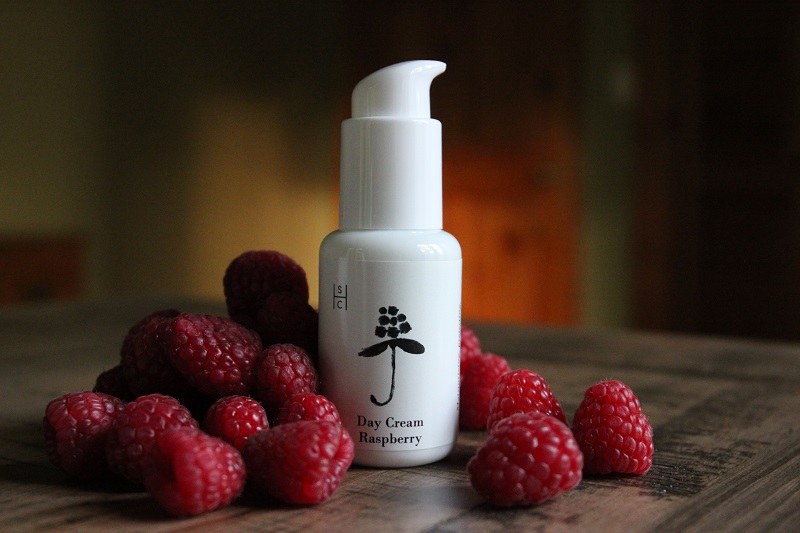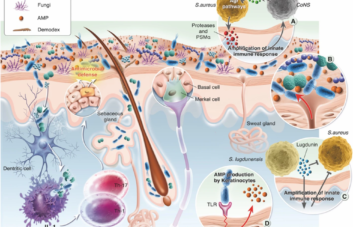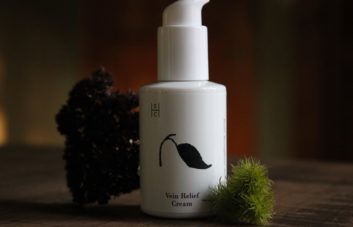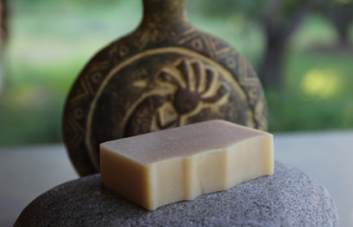The use of Raspberry Seed Oil (RSO) in cosmetics and in the pharmaceutical industry was patented in France, the world’s beauty trendsetter, in 1973. This ingredient has a strong antioxidant activity, protects from skin diseases and improves the skin’s condition (1).
Between 1973 and now, numerous scientific studies have confirmed the beneficial effects of RSO. That is why I use the oil in my cosmetics.
Unique composition
A biochemical study conducted in 2000 revealed that oil extracted from the seeds of red raspberry Rubus idaeus L. consists of polyphenols, flavonoids and anthocyanins – very powerful antioxidants (2). The lipid fraction of RSO contains components with proven benefits to the skin – tocopherols, carotenes and unsaturated fatty acids (3). Such composition ensures the effectiveness of cosmetics with RSO.
Protecting from solar radiation
One of the truly unique properties of RSO is its ability to absorb UV light. Consequently, RSO is an excellent protector from the damaging effects of solar rays and photoageing.
The study of physical and chemical properties of RSO showed that its SPF, a numerical coefficient of protection from UVB, was 28 to 50. That meant RSO protected from UVB as effectively as the titanium dioxide, a widely used UV absorbing chemical used in sunscreens. Also, RSO turned out to be effective in absorbing UVA rays, for which titanium dioxide is not so good, with the protection coefficient being 28 to 502. UVA rays may penetrate deeper skin layers reaching blood vessels and damaging blood cells (4).
These studies demonstrate that RSO can successfully be used to protect our body from solar UV in a wide spectrum range.
Antioxidant properties
RSO contains alpha-, gamma- and delta-tocopherols, which are different isoforms of vitamin E, a vital substance for the skin. It is an antioxidant that protects from various adverse environmental conditions (5). The concentration of various vitamin E isoforms and other molecules with similar activities in RSO is high, providing effective protection of the skin (2,3).
Scientists showed that human fibroblasts, cells of the derm, treated with vitamin E regenerated after burns better than those in the control group (6). Vitamin E is widely used in the cosmetic and pharmaceutical industry due to its known ability to slow down ageing, to moisturize and to soften the skin.
Carotenes, precursors of vitamin A, as well as some other substances protecting the skin from free radicals are also present in RSO3, (7).
Lastly, the strong antioxidant properties of RSO protect the other components of a cosmetic formulation from oxidation which preserves its overall efficiency and shelf life (8).
Protecting properties
Another source of the beneficial effects of RSO on the skin are the lipids and essential fatty acids. Phospholipids from RSO are antioxidants, but they also enable regeneration of the protective skin barrier. On top of that, they are good emulsifiers ensuring a fine and pleasant texture of the cosmetics (2).
RSO has lots of essential fatty acids that cannot be produced by our own cells and need to come from external sources (2,3). Omega-3 acids substantially decrease the risk of eczema in children (9), therefore RSO may also exert anti-eczema activity and help alleviate dry skin.
Anti-cancer properties
RSO can also exert anticancer activity. Addition of RSO to the growth media of cancer cells suppressed their growth (10). Anti-inflammatory and anti-microbial effects of RSO were also shown in the same study.
The use of natural RSO in cosmetics helps maintain healthy skin, protects the skin from damaging environmental factors and prevents various skin diseases.
In my cosmetics
I use cold pressed RSO in my day cream Raspberry, as well as in my hand cream. These products will protect your skin from the sun and other damaging elements, will soften and smooth your skin
Copyright Snejana Hill Cosmetics. Use of this text or parts of this text without prior written permission from Snejana Hill Cosmetics is prohibited.
References
- Pourrat, H., & Pourrat, A. (1973). Compositions cosmetiques et pharmaceutiques. French patent 7345501.
- Oomah B.D., Ladet S. et al. (2000) ”Characteristics of Raspberry (Rubus idaeus L.) seed oil” Food Chem 69(2000): 187-193
- Parry, J., L. Su, et al. (2005). “Fatty acid composition and antioxidant properties of cold-pressed marionberry, boysenberry, red raspberry, and blueberry seed oils.” J Agric Food Chem 53(3): 566-573. + (1)
- Osipov A.N., Smetanina N.M., Pustovalova M.V., Arkhangelskaya E., Klokov D. (2014) The formation of DNA single-strand breaks and alkali-labile sites in human blood lymphocytes exposed to 365-nm UVA radiation. Free Radic Biol Med. 73:34-40.
- Michels A.J. (2012) “Vitamin E and Skin Health” Linus Pauling Institute, Oregon State University, February 2012
- Butt, H., A. Mehmood, et al. (2017). “Protective role of vitamin E preconditioning of human dermal fibroblasts against thermal stress in vitro.” Life Sci 184: 1-9.
- Teng, H., L. Chen, et al. (2016). “Ultrasonic-Assisted Extraction of Raspberry Seed Oil and Evaluation of Its Physicochemical Properties, Fatty Acid Compositions and Antioxidant Activities.” PLoS One 11(4): e0153457.
- Niculae G., Lacatusu I. et al (2014) “Rice bran and raspberry seed oil-based nanocarriers with self-antioxidative properties as safe photoprotective formulations” Photochem Photobiol Sci. 13(4):703-16
- Miles, E. A. and P. C. Calder (2017). “Can Early Omega-3 Fatty Acid Exposure Reduce Risk of Childhood Allergic Disease?” Nutrients 9(7)
- Seeram, N. P. (2008). “Berry fruits for cancer prevention: current status and future prospects.” J Agric Food Chem 56(3): 630-635.




